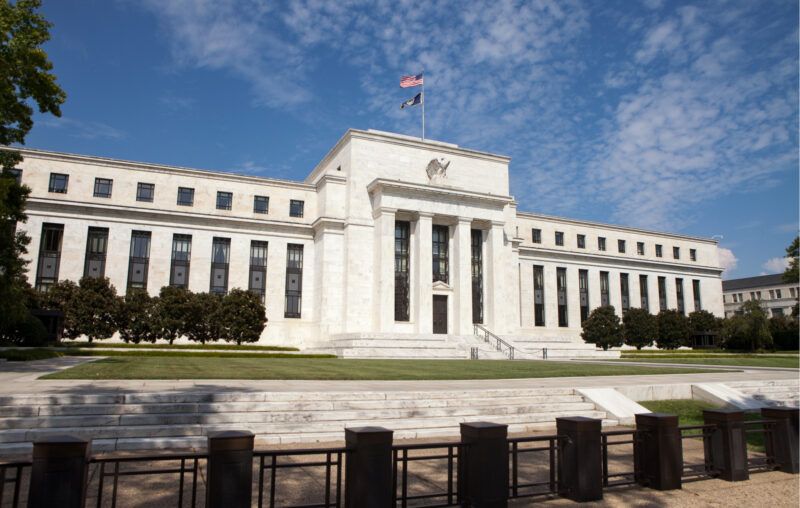Mandate Drift at the Fed Is Par for the Course

Reprinted from The Hill
The Federal Reserve has lost its way. It’s pressured by political forces that want it to try its hand at everything except ordinary central banking. Monetary policymakers seem more interested in talking about climate change and race relations than inflation. The Fed’s modest tightening reflects a far too sanguine attitude towards economy-wide price pressures.
Politicians are just as much to blame as technocrats. As a creature of Congress, it’s up to Congress to set the Fed’s course. The longer the Fed wanders without purpose, the worse off we’ll all be.
Mission creep and mandate drift are the rule, not the exception, at the Fed. It’s time to get the world’s most important central bank back on course. Let’s start with the basics. What is the Fed for?
Most people know the Fed has a dual mandate: maximum employment and stable prices. But few know there’s actually a third plank: moderate long-term interest rates. Policymakers, academics and legislators tacitly agreed to minimize the last part, and for good reason. Interest rates are determined by supply and demand in global capital markets. Even the Fed, with all its power, has little control over these fundamental economic forces. Yet the gentlemen’s agreement to pare down the triple mandate to the dual mandate reflects a troubling trend — the Fed is happy to go its own way, and its nominal overseers are happy to let it.
Here’s another thing: The Fed was never intended by its creators to be a central bank. During the debates over the creation of the Federal Reserve System more than 100 years ago, its proponents assured the public that the Fed would function as an augmented clearinghouse, facilitating rapid liquidity transfers to stave off nascent bank panics.
Americans knew about central banks from Europe. They didn’t like what they saw. Central banks were oligarchical, quasi-aristocratic institutions that fit poorly with the American spirit of republican democracy. We got the Fed largely because its boosters promised it wouldn’t become the very thing it is today. The Fed has been a chameleon since day one.
Currently, the battle for the Fed’s future hinges on appointments to the Board of Governors. President Biden has drawn major criticism for his choice of nominees. He deserves it. Although Sarah Bloom Raskin has withdrawn, that she was nominated in the first place is alarming. As for Lisa Cook, her respectable academic credentials and expertise on racial inequality have no relevance to monetary or financial policy. But give the president and his advisers credit for knowing the lay of the land. Given partisan deadlock in Congress, the best chance for steering the Fed comes from supporting, rather than reining in, mission creep.
Yet there’s hope for bipartisan consensus on a refocused Fed. The power to create liquidity, allocate credit and regulate banks for ideological reasons is too tempting to ignore. As long as backdoor control over the commanding heights of finance is on the table, partisans have a very strong incentive to ratchet up their efforts at Fed capture. Everyone would be better off if we could escape this arms race. The best way to lower the stakes is to refine the Fed’s mandate and keep it within explicit, well-defined bounds.
On monetary policy, Congress should force the Fed to focus on a single dollar-denominated variable. Inflation is the most popular option. While it’s not the best conceivable rule, it’s probably the best feasible rule. But while the Fed has a self-chosen inflation target, it refuses to specify a concrete path for the dollar’s purchasing power. This means we have no benchmark for judging the Fed’s performance. Congress should correct this mistake. At the same time, it should do away with the superfluous employment and interest rate component of the mandate. If the Fed is doing its job keeping inflation low and predictable, the other factors will take care of themselves.
On regulatory policy, Congress must clarify that the Fed’s commitment to financial stability does not permit it to tinker with everything possibly related to banks’ balance sheets. If current statutes really do permit the Fed to tinker with environmental and social policy, there are no principled limits on its power. This is obviously wrong. The best thing Congress can do for financial stability is force the Fed to focus on capital adequacy. Banks should maintain a buffer to absorb short-run financial shocks, and the Fed is an appropriate agency to police this. But anything more expansive, such as steering credit to preferred organizations and causes, is unacceptable.
The American public never consented to the Federal Reserve as it exists. Correcting this oversight is crucial. We must decide, so long as we have a central bank, what we want it to do. The best feasible reforms tighten the Fed’s leash. A constrained Fed is a competent Fed. A drifting Fed is a danger to the public.








